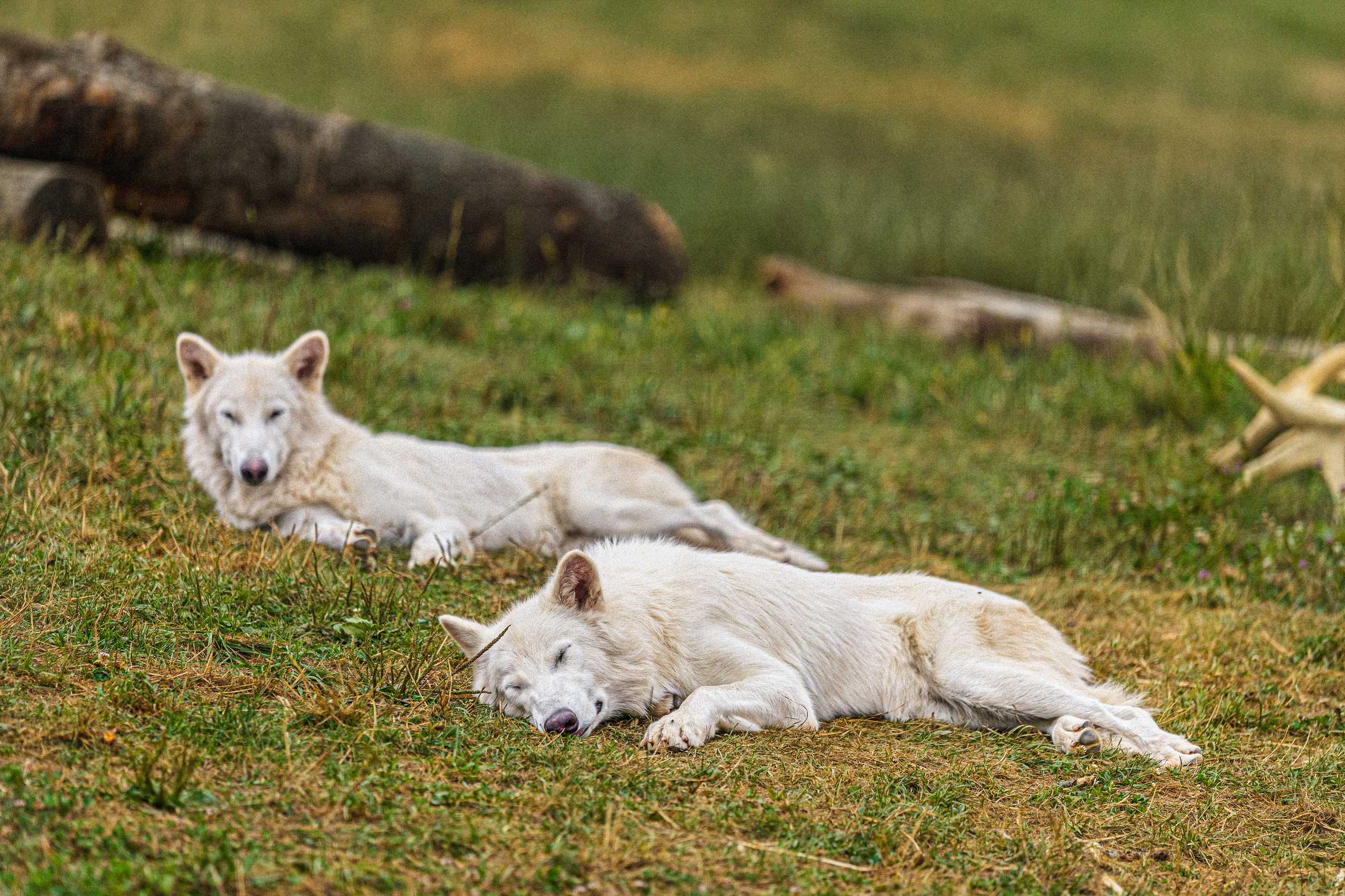The world’s first de-extinct animals have officially turned one year old. Colossal Biosciences, the company leading the charge on de-extinction science, is celebrating the first birthday of Romulus and Remus, the dire wolves born in October 2024 who have since become living proof that bringing back long-lost species is possible.
Once thought to be the stuff of fantasy and popularized in modern culture by HBO’s Game of Thrones, dire wolves were a real species that vanished over 12,500 years ago. Colossal stunned the world earlier this year when it announced that its team had not only recreated the long-extinct predator but that the animals were thriving. With Romulus and Remus now turning one, the company marks a milestone moment in science and conservation history.
Dire Wolves Are The First De-Extinct Animals in History

Romulus and Remus were born on October 1, 2024, making them the first successfully de-extinct animals in history. Colossal first revealed their existence in April 2025, when the wolves were six months old and their sister Khaleesi was three months.
The dire wolf’s comeback was made possible by sequencing DNA from a 13,000-year-old tooth and a 72,000-year-old skull. Scientists made 20 unique precision germline edits, including 15 edits from ancient gene variants, to create healthy dire wolf puppies. The result is not only a scientific breakthrough but also a living reminder of a species that had been absent from Earth for millennia.
Life and Future of the Dire Wolves
A year on, Romulus and Remus have grown quite large, weighing more than 120 pounds each, with Romulus on track to exceed 140 pounds. Both currently consume more than five pounds of meat daily, fed a varied diet of ground meat, stew-sized chunks, and carcass portions such as deer, cattle, and rabbit. They also receive bones to chew and occasional treats of freeze-dried beef liver for training. On rare occasions, they hunt small rodents within their preserve.
The wolves live on a 2,000+ acre ecological preserve certified by the American Humane Society and registered with the USDA. Their environment includes diverse habitats, engagement zones, natural dens, and an on-site veterinary clinic. Ten full-time staff, supported by live cameras, drones, and round-the-clock monitoring, ensure the wolves’ safety and well-being.
The location of the dire wolf preserve is kept secret for security purposes as upon revealing the woolly mouse to the world, random visitors would show up to Colossal Biosciences to try and see them.
I was one of the first in the world to visit the new Colossal HQ and labs in Dallas, opening later this month officially, and while there, Colossal’s Chief Animal Officer Matt James confirmed to me their plans to eventually expand the dire wolf pack. Now we can confirm this will increase the pack size from the current three to six to eight animals. As the wolves continue to grow through 18 months and beyond, Colossal is already looking at what a full pack dynamic could teach scientists about canid behavior and the future of de-extinction.
What The Dire Wolves’ First Birthday Celebration Looks Like
To mark the milestone, Colossal unveiled several celebratory surprises for Romulus and Remus. Emmy Award winning musicians Stan Bush and Lenny Macaluso, best known for anthems like “The Touch” and “Never Surrender,” created a brand-new power rock track titled Happy Birthday Dire Wolf. The song accompanies a video (watch above) that includes never-before-seen footage from the wolves’ first year. It’s perfect.
The company also partnered with San Francisco’s Mishka luxury dog bakery to create a three-tier cake designed just for the wolves. Crafted from beef pâté, broth, and liver, the wild-themed cake was built using a custom 3D wolf mold and carefully balanced to meet the animals’ dietary needs.
For Colossal’s scientists and caretakers, the dire wolves’ first birthday is not just a milestone but a validation of years of research, innovation in new technologies, and daily commitment. “We’ve witnessed their physical, emotional, and social growth—something no one has seen in 12,500 years,” Chief Animal Officer Matt James, who was present for the wolves’ birth, said while reflecting on their growth. He continues: “Remus is fearless and bold, while Romulus is inquisitive, cautious, and confident.”
Chief Science Officer Beth Shapiro emphasized how the dire wolves have validated Colossal’s genetic editing efforts:
“The dire wolves are thriving—beyond anything we could have imagined. Over the past year, we’ve learned so much from Romulus, Remus, and Khaleesi. Most importantly, the edits worked as expected and the animals are healthy. You can see it in their size, strength, and their striking white coats. Watching their development has been extraordinary.”
“We’ve seen the excitement from the world after the birth of the dire wolves which captured the world’s imagination, and we want to share this milestone with everyone who has followed their journey,” Colossal CEO and co-founder Ben Lamm highlights as he reflects on the bigger picture: “Romulus, Remus and Khalessi are the first animals ever brought back from extinction. They represent hope in the fight against biodiversity loss and proof that we can begin to restore what has been lost. The dire wolf’s story is a banner of possibility—for science, for conservation, and for humanity.”
This story originally appeared on Screenrant


